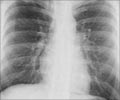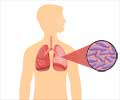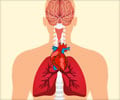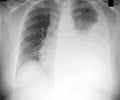Two small molecules that could overcome the multidrug resistance of the bacterium that causes tuberculosis have been discovered by scientists.

In tuberculosis, the mycobacterium enters and infects the lung's immune cells, the macrophages, rendering them unable to digest and eradicate the bacterium. Despite being an "old" disease, tuberculosis is not easy to treat, as current antibiotic regimens last over six months. But the greatest concern is that Mtb shows increasing resistance to drugs. This dire situation creates an urgent need for alternative therapeutic approaches.
A promising strategy involves targeting the molecular machinery that Mtb uses to infect lung cells. Mtb uses a specialized secretion system to release "virulence proteins" upon infection. Once secreted, these proteins help the bacterium invade the cells of a person's lungs and replicate itself, and even break down the infected cells, destroying the lung tissue and allowing Mtb to escape and spread.
The team of Stewart Cole at EPFL's Global Health Institute developed a drug-screening assay capable of exploring thousands of compounds simultaneously. The scientists used human lung cells, which they grew inside the wells of specialized culture plates. The cells were infected with Mtb and then incubated with different compounds. The compounds selected were those that abolished the cell lysis caused by a potent virulence protein called "EsxA". The survival rate of the cells was then quantified using fluorescent staining. This robust assay allowed the researchers to screen a total of 10,880 different compounds, from a library of a pharmaceutical company working on tuberculosis.
Using the screening method, Cole's team was able to narrow down the compounds to two, abbreviated BBH7 and BTP15, which show much promise in their activity against Mtb. They are able to inhibit the secretion of the virulence protein EsxA even when given at very low doses, and exert multiple effects against the molecular apparatus of Mtb that secretes EsxA, essentially reducing the functionality of its different components. In addition, the two compounds can reverse the suppressive effects Mtb exerts on the innate immunity functions of infected macrophages, which can lead to efficient killing of intracellular bacteria.
"The novelty of this work is that, rather than trying to kill Mtb, we're trying to disarm it so as to prevent tissue damage," says Stewart Cole. "This approach would be used as part of a larger treatment, possibly combined with conventional drugs." This means that any drugs based on BBH7 and BTP15 would act against Mtb indirectly, helping the patient's immune cells – the macrophages – kill the bacterium. This is different to antibiotics, which act directly on the bacterium and often force the multidrug resistance that characterizes tuberculosis.
Advertisement
Advertisement















